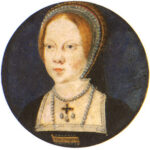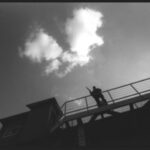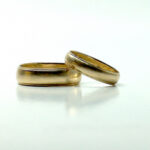During the War of 1812 the entrance to the Baltimore Harbor was guarded by Fort McHenry. In the summer of 1813 Major George Armistead, commanding officer of Fort McHenry, asked for a “flag so large that the British will have no difficulty in seeing it from a distance.” A group of officers were sent to call on Mary Young Pickersgill, a Baltimore widow and experienced flag maker. They asked her to make a large American flag to fly over Fort McHenry. Mrs. Pickersgill agreed and she and her daughter, 13 year old Caroline, set about to make the flag.
The flag was started in Mrs. Pickersgill’s upstairs bedroom but when time came to sew the flag together her house was not large enough. She asked the owner of nearby Claggert’s Brewery for permission to assemble the flag on the brewery’s floor in the evening when there were no patrons. He agreed and the two women completed the flag by candlelight.
Because President James Madison and his wife Dolley had already fled Washington and the British had attacked and captured Washington, setting fire to the White House, they knew an attack was imminent. Preparations were being made at Fort McHenry to protect Baltimore.
In August of 1814, Dr. William Beanes, the doctor that had been treating both American troops and British prisoners, was taken prisoner because he placed disorderly stragglers under citizen’s arrest. The townspeople, fearing that Dr. Beanes would he hung, asked Francis Scott Key to help. He agreed and arranged for Colonel John Skinner, a government negotiator to help him secure Dr. Beanes release.
On the morning of September 3rd, the two men set sail on a sloop flying a flag of truce to meet the Royal Navy. Several days later they were allowed to board the flag ship HMS Tonnant to speak with high-ranking British officers, where they negotiated for Dr. Beanes’ release.
Key and Skinner presented letters to the officers that were written by wounded British prisoners recounting the care given to them by Dr. Beanes and the Americans. The officers agreed to release Dr. Beanes after reviewing the letters. The three men were permitted to return to the truce sloop but because they knew of the plan to attack Baltimore by land and the strength and position of the British they were not allowed to return to Baltimore until after the assault.
On the morning of September 13, 1814, the British bombardment commenced. The bombing continued for 25 hours. The three Americans watched the battle throughout the rainy night with trepidation. As long as they heard the shells they knew that Fort McHenry had not surrendered. And then, utter silence. Had Fort McHenry fallen? The naval assault as well as the land attack on Baltimore had been abandoned and a withdrawal was ordered.
At the break of dawn, Francis Scott Key placed a telescope to his eye and looked toward the Fort’s flagpole. He saw General Armistead’s glorious American flag, our Old Glory, caught in the morning breeze. Key was so moved by the sight of the flag he took a letter from his pocket and wrote some verses on the back of it. He finished his poem at the Indian Queen Hotel in Baltimore. The poem’s original name was “Defence of Fort McHenry.”
Handbills with the poem were distributed to townsfolk. It was published for the first time in the Baltimore Patriot on September 20, 1814. Music was added to the poem and in October of 1814 an actor in Baltimore sang the new song in a public performance and called it “The Star Spangled Banner.
General Armistead’s “Great Garrison Flag” made from wool bunting required 400 yards of material and measured 40×32 feet. Each of the fifteen stars was two feet from point to point and each of the eight red stripes and each of the seven white stripes were two feet wide. Mary Young Pickersgill and her daughter Caroline were paid the sum of $405.90. The flag was completed and presented to Major Armistead in August of 1813. On March 3, 1931, the “Star Spangled Banner” was adopted as the National Anthem of the United States. Today the flag hangs in the Museum of American History at the Smithsonian Institute.






